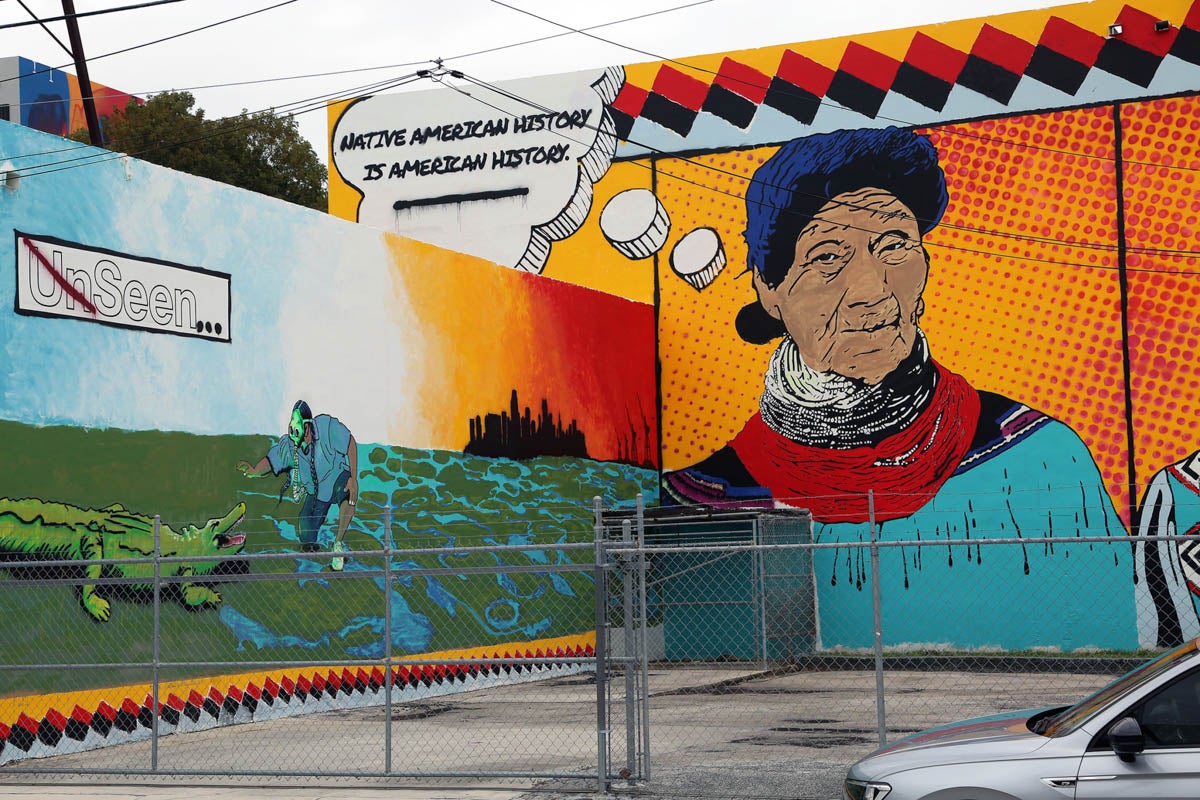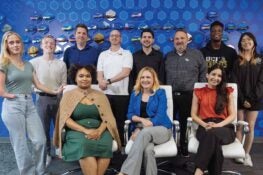As a boy growing up in West Virginia, UCF history instructor Robert Clarke would spend his free time outside. In soil of the Ohio Valley, he’d use his fingers to pull stones from the ground. Some of them were little treasures: arrowheads.
“I thought they were the coolest things ever,” Clarke says.
The discovery of arrowheads led to trips to museums and to family discussions about Native American history. “The history of native people was woven into the fabric of the area,” he says. “It was a part of life. That’s what ignited my interest in local history wherever I’ve lived.”
In Oklahoma, he learned about the cultures of the Osage, Chickasaw and Creek Nations. In Hawaii, he wanted to know more about the traditional language and customs. His curiosity piqued again when he arrived in Central Florida and heard geographical names like Seminole County and Osceola County. And just like the 7-year-old boy picking up stones in West Virginia, he wanted to know more about the genealogy of the land and the people who once lived here.
When UCF was built, originally as a space university known as Florida Technological University, the land looked far different than what we see today. The 1,227 acres were rough and rural, with some of the nearby scrub pine forest used to support the turpentine industry.
“The more I teach history,” says UCF Professor of History Daniel Murphree, “the more important I believe it is for people to understand it — I mean really understand it.”
He doesn’t mean the social media versions of history or even some of the older textbook versions of it. “Understanding requires research,” he says, “and an appreciation for the participants of history.”
Historians like Murphree estimate that as many as 350,000 Native Americans were living in Florida when Europeans arrived in the early 1500s. Smaller groups of native people had formed tribes, and at least five of those tribes would influence the interior of Florida: the Ais, Apalachee, Calusa, Timucua and Tocobago tribes.
“If you were to come here between the 1500s and 1700s, you would have seen groups encountering each other for trade and commerce,” Murphree says.
Those groups used canoes to traverse waterways. They tried to nurture the land. And at times they fought over it. There were wars against Europeans, colonialists and against each other. Diseases took more lives than the conflicts. The decimation and oppression spurred a mass migration west.
“By the mid 1700s, most Native Americans who lived in this area were no longer in coherent groups,” Murphree says. “Some remnants of different tribes collectively became known as Seminoles. They actually grew in number when Creeks migrated here from Alabama and Georgia, and because of their affiliation with escaped African American slaves and free Blacks.
Then, as a result of the three Seminole Wars, their numbers dwindled again. And they left a vast vacuum of land.
Clarke references a book called Ceremonial Time by John Hanson Mitchell. The book’s premise takes one square mile of land and traces its human and geological history 15,000 years back. Clarke says you could uncover fascinating stories about people groups buying, selling, winning, foreclosing and vacating a square mile anywhere in the world. West Virginia. Oklahoma. Hawaii. Africa. Europe.
“And right here,” he says of Central Florida.
The first shovelfuls of sand dug on March 19, 1967, to mark the coming of FTU were on land that had been purchased and donated. Nineteen months later, the university opened as a non-segregated institution focused on producing research and talent for the space program. Disney World hadn’t yet welcomed its first visitor. There was no convention center, no world-renown tourism, and very limited demand for land.
“But there is a history,” Murphree says, “and the history includes people.”
Murphree’s interest in history through the eyes of people heightened as a pre-teen when his family moved to South Africa, during apartheid.
“I could never understand why people were separated by race,” Murphree says. He attended an international school with students from Brazil, Asia, Europe and the U.S. Every person there had a heritage story, none more important than another. Later, while studying history at Auburn, one of his professors talked about researching colonial Florida.
“I didn’t even know there was such a thing as colonial Florida,” Murphree says. While digging into his own research, he kept running into records of council meetings that included Creek and Seminole tribes.
Murphree realized there had to be something significant about those groups.
“Prior to that, as much as I wanted to learn about the perspectives of others, I had blinders on,” he says. “I’d been learning about native people the way most of us learn about them: as props. But they belong in the center of the story. They were the movers and shakers in Florida. The French, Spanish, British and colonialists didn’t dictate relationships. The Native Americans did. They were the power holders.”
And then, they weren’t. As we see with powerful groups throughout history, fighting and disease took a heavy toll.
“But,” Murphree says, “they didn’t disappear.”
Before teaching history at UCF, Clarke worked as a general manager for the Hard Rock Cafe, whose parent company is the Seminole Tribe of Florida. After coming to UCF, he invited Max Osceola, a tribal council chairman, to give a guest lecture on the Seminole Indian Wars and tribal history for his class.
“I wasn’t sure if the students would be interested, or if they’d even show up.”
Clarke was pleasantly surprised to see more than 400 UCF students and faculty fill a large hall. They leaned in, listened to Osceola, and stayed to ask questions. One question kept coming up: How do you want to be treated?
“Just treat us with respect,” Osceola said.
“The message was obvious,” Clarke says. “Don’t marginalize us. Don’t exploit us. Don’t use us for identity politics. Remember that we’re a part of the fabric of the area.”
In April 2021, UCF’s Office of Diversity and Inclusion released a statement recognizing land once held by five tribes and the presence of the Seminole Tribe of Florida in the state. Murphree says it was a thoughtful step, “and now more can be done to recognize our community’s Native American heritage on campus.”
He suggests maybe someday the Seminoles could build a chickee on campus — a shelter where students can relax and reflect.
“Native Americans are not relics of the past,” Murphree says. “They’re very much a part of life today, and their influence will always be with us.”





